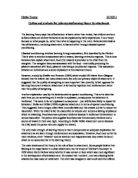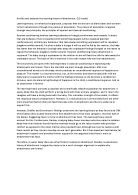However, a study by Shaffer and Emerson (1964) which studied 60 infants from Glasgow showed that the infants had many attachments but only one primary object of attachment. It suggested that the quality of caregiving is more important than quantity, which opposes the learning theory as it states an attachment is formed by repetition and reinforcement rather than the quality of caregiving.
Another explanation used by the behaviourists is operant conditioning. This is the idea that each time you do something and it results in a pleasant, consequence the behaviour is reinforced. This same is for an unpleasant consequence – you will be less likely to repeat the behaviour. Dollar and Miller (1950) explained attachment in terms of operant conditioning. They suggested that a hungry infant feels uncomfortable and this creates a drive to reduce the discomfort. When the infant is fed the discomfort is reduced and induces a feeling of pleasure which is rewarding. Food becomes a primary reinforce because it reinforces the behaviour to reduce discomfort. The person who supplies food becomes the secondary reinforce and a source of reward in their own right. According to Dollar Miller attachment occurs because the child seeks the person who can supply the reward.
The only main strength of learning theory is that it does provide an adequate explanation for attachment as we learn through reinforcement and association. However, food may not be the main reinforce, other ‘rewards’ such as attention and responsiveness may create the bond – which is not accounted for in the learning theory.
The main weakness of the theory is the role of food in attachment. Some people believe that feeding is the major factor in a close attachment, but the study of ‘Harlow’s Monkeys’ in 1959 where Harry Harlow tested whether it was contact or food which was more significant in the development of love/attachment. He created two ‘mothers’, one had a feeding bottle attached but was made of metal wire. The other was wrapped in warm soft cloth but offered no food. The monkeys spent most time with the cloth covered monkey and would cling to it, especially when frightened (a proximity seeking behaviour which is stated as a characteristic for attachment in Bowlby’s theory). This goes against the learning theory as it would predict the young monkeys would become attached to the mother which offered food and offered reduction of the hunger drive. Both this study and the study by Schaffer and Emerson conclude that ‘cupboard love’ is not the best explanation for attachment.
Validity is also questionable of the learning theory. Studies are largely based with animals and therefore there is not sufficient data to draw conclusions from their studies to directly apply to humans. Human behaviour is more influenced by emotions and the thinking process, which does not support the learning theory as it is oversimplified version of human behaviour.
Overall the evidence for the learning theory is very weak. Although principles of the theory have been proved (Pavlov’s dogs and the Skinner box) the main idea that food is the primary incentive for attachment is opposed by many studies. This suggests that the theory is too simple; it does not take in other ‘rewarding’ factors and is too oversimplified to be applied in human behaviour.







